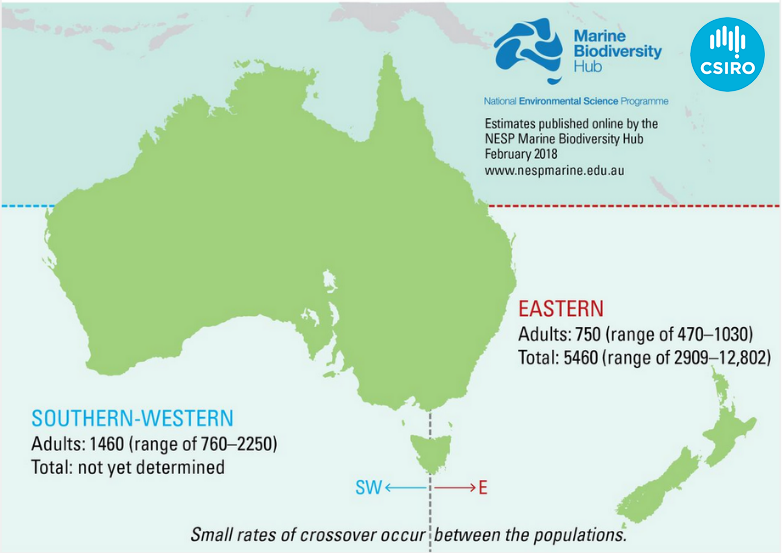Key points
- Our scientists have developed a genetic analysis technique (close-kin mark-recapture) to estimate shark numbers.
- There are around 2210 adult white sharks in Australian waters, and they can travel over 12,000 km in five months.
- Whale sharks can swim continuously for four weeks, but most stay within 400 km of Ningaloo.
Director Steven Spielberg might be to blame for the image you conjure up in your mind when you think about sharks. Or he might be the reason why your Aunty hasn’t set foot in the ocean since 1975.
While Jaws didn’t teach us much about these fascinating creatures, science certainly has.
We have been studying sharks for a decade, but science only scratches the surface of understanding these ancient fish. Here are four things we know about sharks, thanks to science.
Whale sharks can swim continuously for four weeks
Our researchers tagged 40 whale sharks with satellite tags to find out where they go after visiting Ningaloo Reef in Western Australia, as part of the Ningaloo Outlook research program.
Some of the satellites transmitted information for more than a year and showed most of the whale sharks remained within 400 kilometres (km) of Ningaloo.
The animals each had their own unique movement patterns. Some whale sharks moved as far as Christmas Island, Indonesia, Timor Leste and the Gulf of Carpentaria. Some even swam continuously, from 2 km to 4 km per hour, for up to four weeks to reach an area where they then spent several months.
Researchers said these long distance movements suggest whale sharks are moving to these areas based on prior experience or an inherited ability to find sporadic patches of food.
There are about 750 adult white sharks in the eastern Australian population
Our researchers have developed a world-first genetic analysis technique to estimate adult white shark numbers. The technique, called close-kin mark-recapture, involves taking a tissue sample from a shark and obtaining a genetic profile. By comparing these profiles to other white shark profiles in our database we can find family relationships.
The highly detailed genetic data sampling is combined with our innovative statistical methods to estimate the adult population. We combine this genetic technique with data from juvenile white shark tagging programs to estimate juvenile survival rates. We can then estimate the abundance of the entire population.
So what have we found? Researchers estimate there are 750 adults in the eastern Australian white shark population, and a total eastern population of 5460. For the south-western population, there are an estimated 1460 adult white sharks.
We can estimate speartooth shark numbers despite only three adults being known to science
In 1982, researchers discovered the critically endangered speartooth shark. There was very little known about the species at the time. The discovery took place in the Bizant River, on the eastern side of Cape York in Queensland, where it’s now thought to be extinct.
CSIRO-led research in 2004 helped gain an understanding of the distribution of juveniles in Queensland’s Wenlock River and in the Northern Territory.
In 2015, researchers managed to capture, tag and release two adult speartooth sharks – the first records of adults of the species in Australia.
Since then, only one more adult female has been tagged.
While the adults are still too rare to be able to estimate how many there are, our researchers use the juveniles to estimate adult numbers.
Using close-kin mark-recapture (as described above), researchers have since been able to estimate there are around 900 adult speartooth sharks whose young use the Wenlock River in Queensland.
A white shark can travel over 12,000 km in five months

White shark tagging at the Neptune Islands, outside the mouth of Spencer Gulf in South Australia collected 3663 days and 109,900 km of tracking data.
Twenty-nine sharks covered more than 1000 kilometres each while tagged. The female sharks ventured further offshore compared to current Australian records.
One adult female took an epic journey covering 12,240 km in five months. She first headed eastwards from South Australia in the central Tasman Sea in summer. She then went south to sub-Antarctic waters off Macquarie Island in the Southwest Pacific Ocean.
